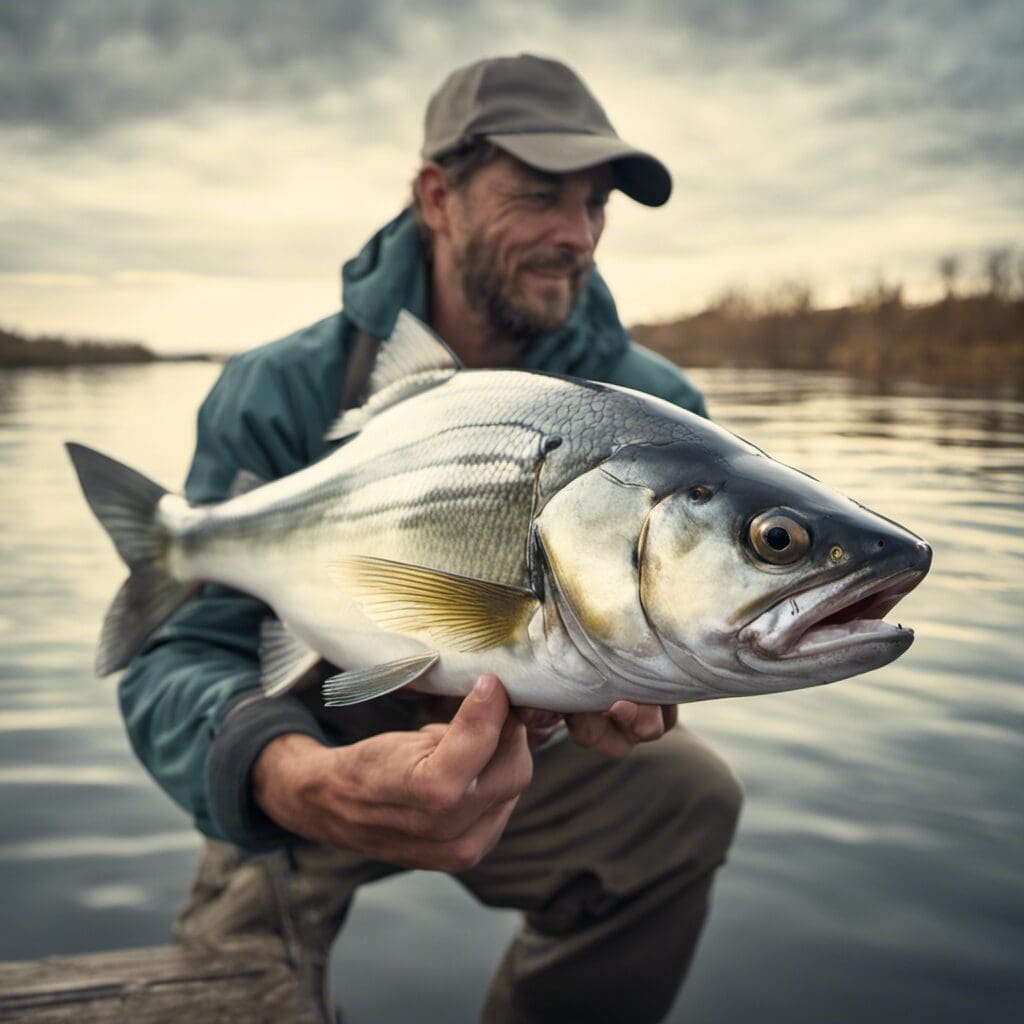Introduction
The Shad fish is from the family Clupeidae, prominently characterized by their silver bodies and blue-green backs. They are known for being an excessively mobile fish species, demonstrating extensive seasonal migrations.
Conservation Status
As per the International Union for Conservation of Nature (IUCN), Shad fish have been categorized under the ‘least concern’ status. This denotes the relatively stable population numbers of Shad fish. However, conservation efforts are still demonstrated to protect them, especially in areas where overfishing or habitat degradation occurs.
Statistics
| Average | Range | |
|---|---|---|
| Length | 30-40 cm | 15-60 cm |
| Weight | 1.5-3 kg | 1-6 kg |
| Lifespan | 10 years | 8-12 years |
Distribution
Shad are native to the North Atlantic and Pacific Oceans, primarily found in the United States, Mediterranean sea areas, and the Eastern coasts of Asia. They show unique migration patterns wherein they travel from saltwater to freshwater for spawning during the spring season.
Habitats
Able to adapt to a range of temperatures and depths, shad are primarily found in medium to large rivers and the coastal waters of the ocean. They prefer temperatures between 10 and 20 degrees Celsius.
When and Where to See
Shad migration typically occurs during spring, where they move in large schools. They can be seen in abundance, especially during dawn and dusk.
Best Fishing Locations
The best locations for Shad fishing include rivers such as:
1. Delaware River (Pennsylvania & New Jersey, USA)
2. Potomac River (Maryland, USA)
3. Fraser River (British Columbia, Canada)
4. Roanoke River (North Carolina, USA)
5. American River (California, USA)
6. Connecticut River (New England, USA)
7. St. John’s River (Florida, USA)
8. Hudson River (New York, USA)
9. Savannah River (Georgia & South Carolina, USA)
10. Merrimack River (Massachusetts, USA)
How to Catch
Shad are best caught using small and flashy lures. Techniques such as drift fishing, bottom bouncing, and fly fishing can also be used effectively. The optimal fishing time is during their spring period of migration.
Identification Guide
Shad are identifiable by their silver sides and dark blue or green backs. They have a relatively compressed body with a triangular mouth, small teeth, and usually possess a row of dark spots on each side.
Culinary
Shad is highly prized for its rich taste. It is typically smoked or grilled, and its roe (eggs) is considered a delicacy. Nutritionally, it possesses high quantities of Omega-3 fatty acids, Vitamin D, and B vitamins.
Additional Information
Shad travel in large schools and feed mainly on zooplankton. Their predators include larger fish species, birds, and humans. Historically, the Shad’s return to rivers was regarded as a sign of spring, demonstrating cultural significance in many societies.
References and Further Reading
For further reading on Shad fish, the following sources are recommended:
1. Smith, H.M. 1907. The Fishes of North Carolina.
2. Bigelow, H.B. and W.C. Schroeder. 1963. Fishes of the Gulf of Maine.
3. NatureServe. 2013. NatureServe Explorer: An online encyclopedia of life.
4. Pflieger, W.L. 1997. The fishes of Missouri. Missouri Department of Conservation, Jefferson City.

